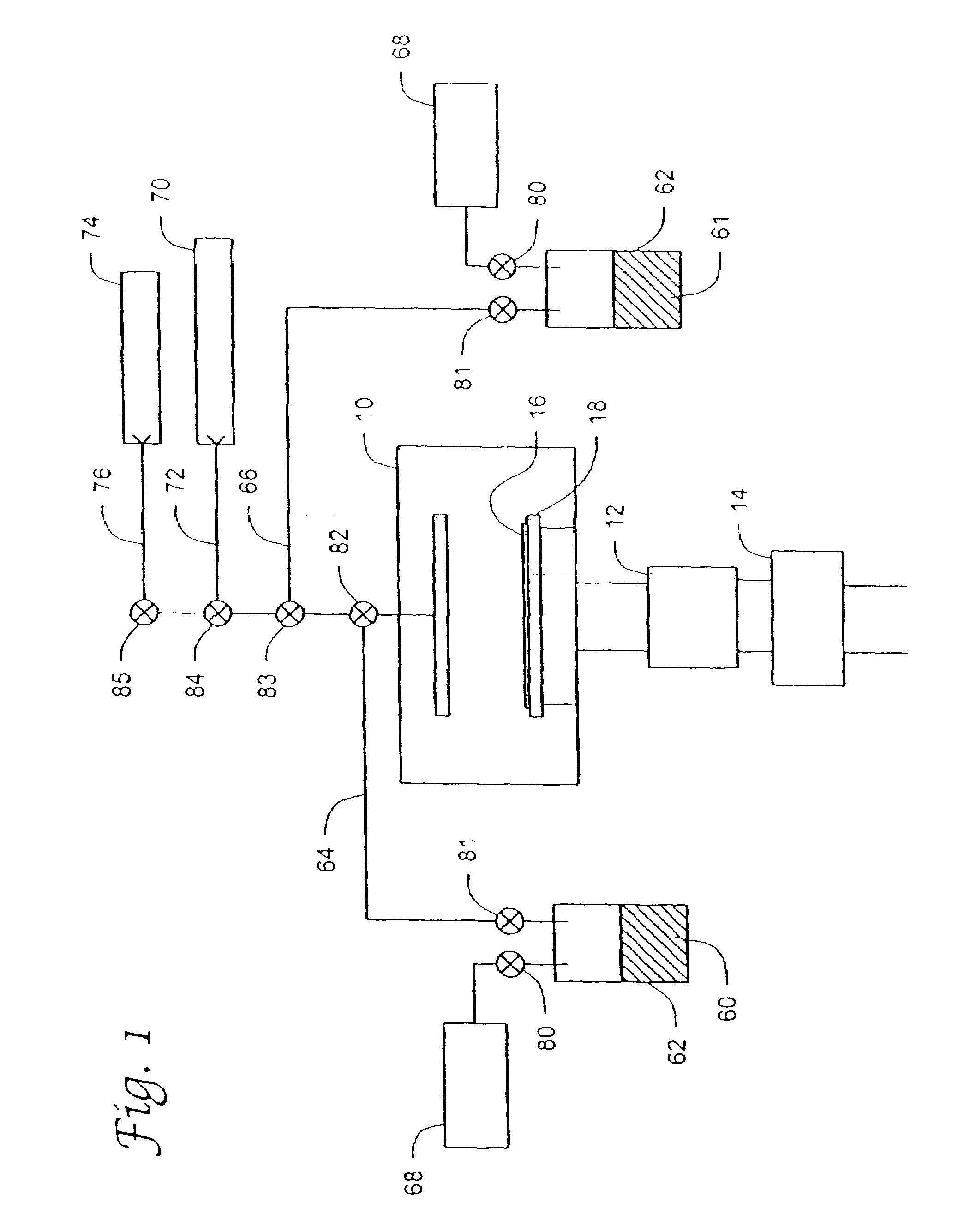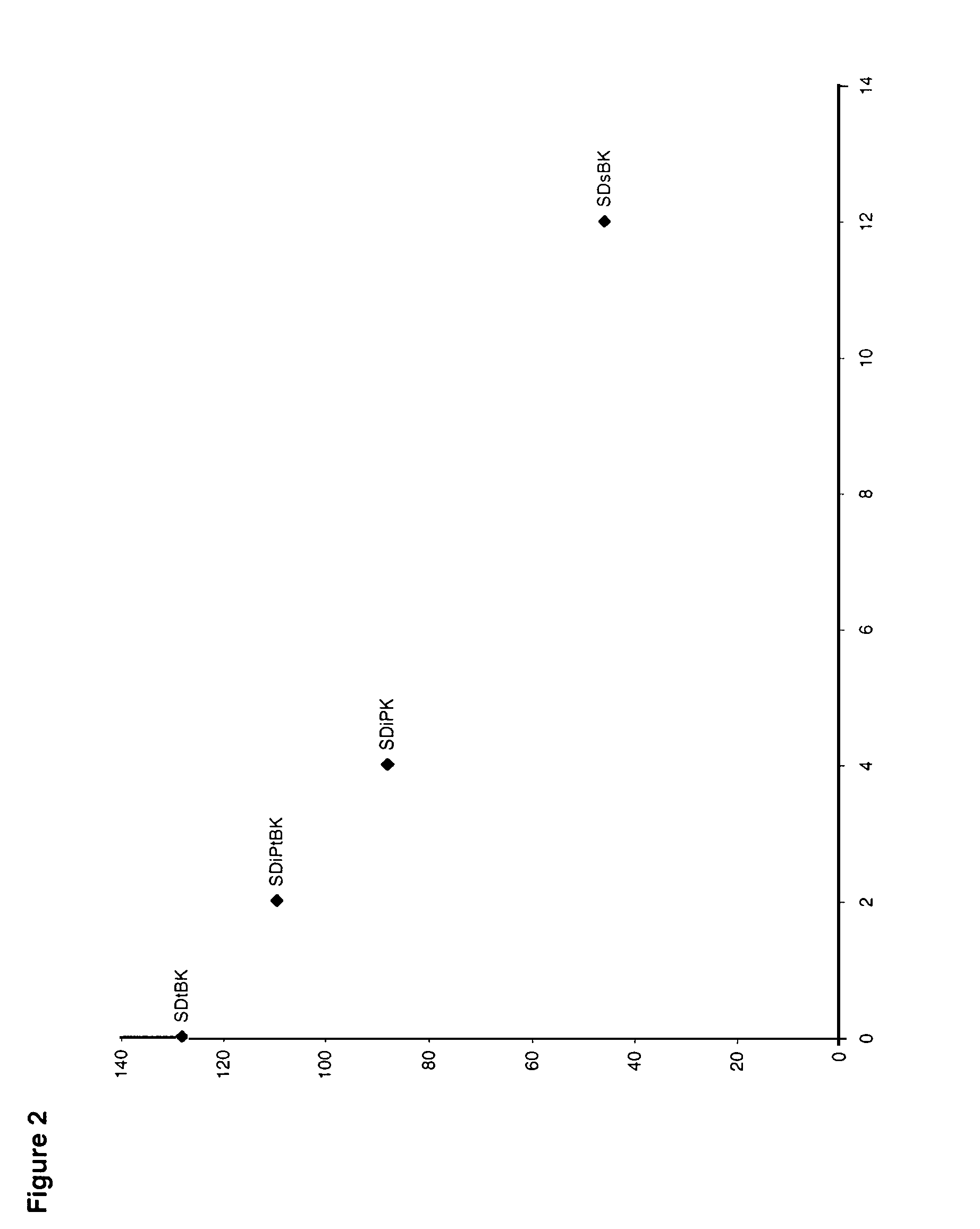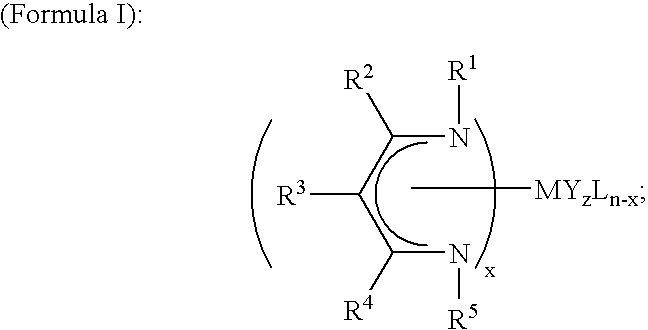Beta-diketiminate ligand sources and metal-containing compounds thereof, and systems and methods including same
a technology of beta-diketiminate and ligand sources, which is applied in the field of beta-diketiminate ligand sources and metal-containing compounds thereof, and systems and methods including, can solve the problems of low thermal stability, poor reactivity of metal diketonates, and difficult integration of alkaline earth metals into vapor deposition processes, so as to minimize harmful gas phase reactions, improve the control of layer thickness and composition, and improve the effect of step coverag
- Summary
- Abstract
- Description
- Claims
- Application Information
AI Technical Summary
Benefits of technology
Problems solved by technology
Method used
Image
Examples
example 1
Synthesis and Characterization of a Ligand Source of Formula III, with R1═R5=sec-butyl; R2═R4=methyl; and R3═H: N-sec-butyl-(4-sec-butylimino)-2-penten-2-amine
[0151]An oven-dry 1-L Schlenk flask fitted with addition funnel was charged with 101 mL of sec-butylamine and 200 mL dichloromethane. The addition funnel was then charged with 103 mL of 2,4-pentanedione and 400 mL dichloromethane, which were then added dropwise to the solution in the Schlenk flask. The resulting solution was then stirred for 90 hours. The aqueous phase formed during the reaction was then separated and extracted with 2×50 mL portions of diethyl ether. The combined organic fractions were dried over anhydrous sodium sulfate and concentrated on a rotary evaporator. The concentrate was then distilled at 66° C., 0.7 Torr (93 Pa); the distillate was a clear colorless liquid. 108.4 g were collected for 70% yield. Gas chromatographic / mass spectrometric (GC / MS) analysis of the distillate indicated a compound with an app...
example 2
Synthesis and Characterization of a Metal-Containing Compound of Formula I, with M=Sr (n=2); R1═R5=sec-butyl; R2═R4=methyl; R3═H; x=2; and z=0: Strontium bis(N-sec-butyl-(4-sec-butylimino)-2-penten-2-aminato).
[0153]In a dry box, a 500 mL Schlenk flask was charged with 7.765 g of strontium bis(hexamethyldisilazane) (19 mmol) and 50 mL toluene. A second Schlenk flask was charged with 8.000 g of N-sec-butyl-(4-sec-butylimino)-2-penten-2-amine (38 mmol) and 50 mL toluene. The ligand solution was added to the strontium solution, immediately producing an amber-colored reaction solution which was stirred for 18 hours. Volatiles were then removed in vacuo. The crude product, a brown liquid, was charged into a 50 mL round-bottom Schlenk flask fitted with short path still head and Schlenk receiver flask in the dry box. The distillation apparatus was attached to a vacuum line and evacuated further, which induced some solidification in the still pot. At full vacuum, heating of the still pot was...
PUM
| Property | Measurement | Unit |
|---|---|---|
| dielectric constant | aaaaa | aaaaa |
| melting point | aaaaa | aaaaa |
| melting points | aaaaa | aaaaa |
Abstract
Description
Claims
Application Information
 Login to View More
Login to View More - R&D
- Intellectual Property
- Life Sciences
- Materials
- Tech Scout
- Unparalleled Data Quality
- Higher Quality Content
- 60% Fewer Hallucinations
Browse by: Latest US Patents, China's latest patents, Technical Efficacy Thesaurus, Application Domain, Technology Topic, Popular Technical Reports.
© 2025 PatSnap. All rights reserved.Legal|Privacy policy|Modern Slavery Act Transparency Statement|Sitemap|About US| Contact US: help@patsnap.com



